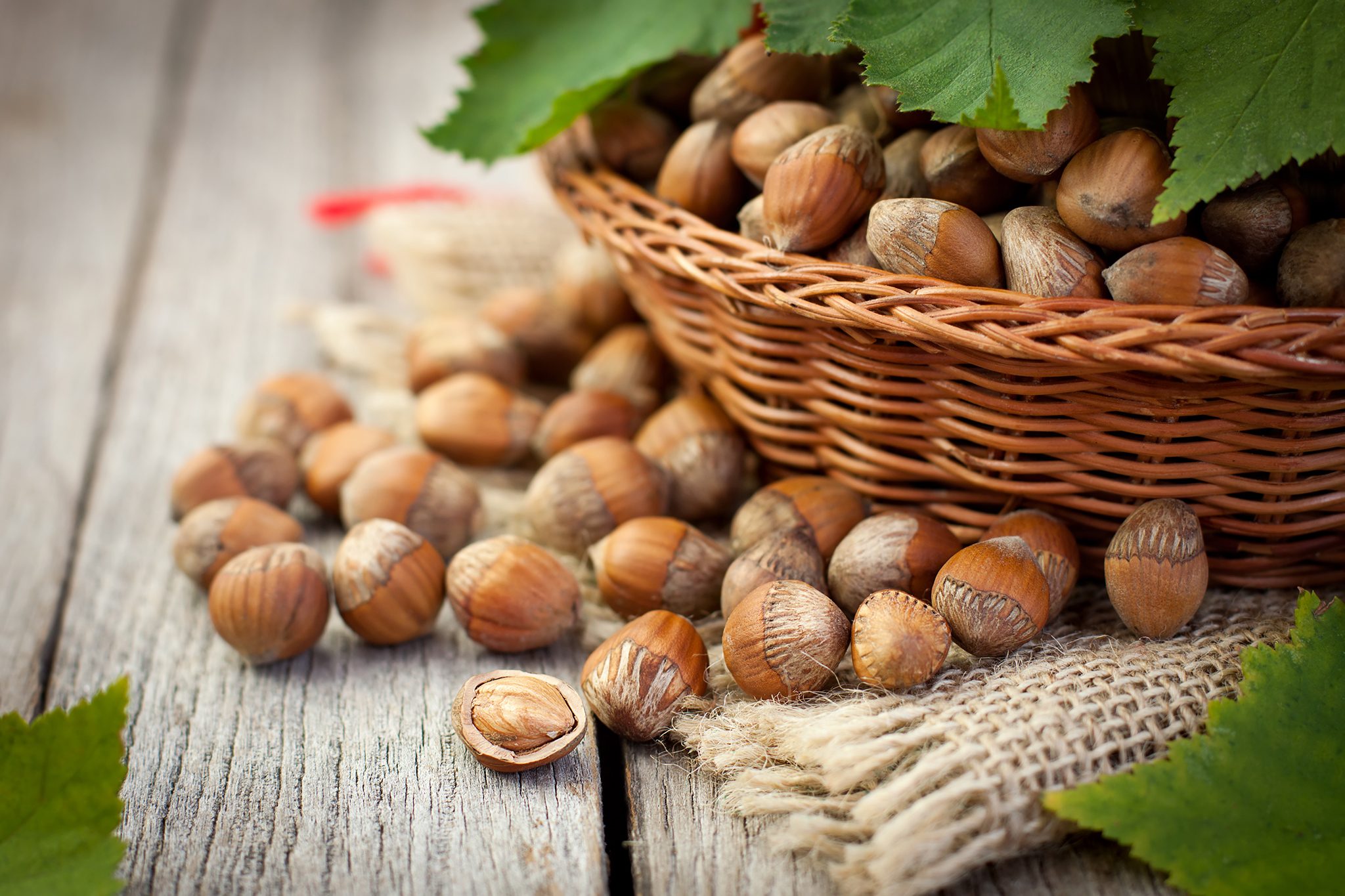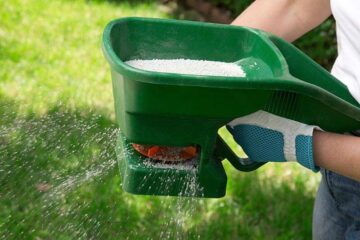Hazelnuts are a popular nut enjoyed worldwide for their rich flavour and nutritional benefits. Understanding how hazelnuts are grown and harvested provides insight into the care and effort that goes into producing this beloved nut.
This article will guide you through the entire process, from the ideal growing conditions to the final harvest.
Ideal Growing Conditions for Hazelnuts
Hazelnuts thrive in specific conditions that support their growth and productivity.
Climate Requirements
Hazelnut trees require a temperate climate to grow well, they do best in areas with mild winters and warm summers. The trees need a certain amount of cold weather during winter to set fruit, but they don’t tolerate extreme cold or frost well.
Regions with moderate rainfall are also ideal, as hazelnut trees need consistent moisture throughout the growing season. However, the soil should be well-drained to prevent waterlogging, which can damage the roots.
Soil Preferences
The soil where hazelnut trees are planted plays a crucial role in their health and nut production. Hazelnuts prefer well-drained, loamy soil that is rich in organic matter. The soil should have a pH level between 5.5 and 7.5, which is slightly acidic to neutral.
Proper soil preparation is essential before planting, as it ensures the trees get the nutrients they need to grow strong and healthy. Good soil not only supports the tree’s growth but also helps in producing high-quality nuts.
Planting Hazelnuts
The planting stage is critical for setting up hazelnut trees for a productive life.
Propagation Methods
Seed propagation and vegetative propagation are the two main ways to make more hazelnut trees. Seed propagation involves planting seeds to grow new trees, but this method is less common because it can lead to genetic variation in the trees.
Instead, vegetative propagation, such as grafting or layering, is more widely used. This method involves taking a part of an existing tree, like a branch, and encouraging it to grow roots. The new tree will be genetically identical to the parent tree, ensuring consistent quality and production.
Planting Process
Once the propagation method is chosen, the actual planting process begins. The best time to plant hazelnut trees is in late fall or early spring when the trees are dormant. The site must be prepared by removing weeds and tilling the soil to improve drainage and aeration.
Trees should be spaced about 15 to 20 feet apart to allow for their full growth and to facilitate air circulation, which helps prevent diseases. The planting hole should be deep enough to accommodate the tree’s root system, and the tree should be planted at the same depth it was in the nursery.
Early Care and Maintenance
In the early years after planting, hazelnut trees require regular care to establish themselves. Watering is crucial, especially during dry periods, to ensure that young trees develop strong root systems. Fertilising with balanced nutrients supports healthy growth, but it’s important not to over-fertilize, as this can harm the trees. Pruning is another essential task.
Proper pruning shapes the tree and removes any damaged or diseased branches, promoting better air circulation and sunlight penetration. This early care sets the stage for a productive tree in the years to come.
Growing and Maturing Hazelnut Trees
As hazelnut trees grow, they face various challenges but also begin to show the promise of future harvests.
Growth Timeline
Hazelnut trees generally take three to five years to start producing nuts. The first few years are focused on establishing the tree and its root system. During this time, the tree grows taller and develops a strong framework of branches.
By the third year, some trees may begin to produce a small number of nuts, but full production usually occurs after five to six years. Once mature, a healthy hazelnut tree can produce nuts for many years, with peak production happening between 10 and 15 years of age.
Challenges in Growing Hazelnuts
Growing hazelnuts is not without its challenges. Pests and diseases can pose significant threats to hazelnut trees. One of the most common diseases is Eastern Filbert Blight, which can severely damage or even kill trees if not managed properly. Pests such as aphids, mites, and nut weevils can also affect the health of the trees and reduce nut yields.
Weather conditions, particularly late spring frosts, can damage the flowers and reduce the nut set. Farmers must be vigilant in managing these challenges through proper care, regular monitoring, and, if necessary, using organic or chemical treatments to protect their crops.
Pollination Process
Pollination is a critical aspect of hazelnut production. Hazelnut trees are wind-pollinated, meaning that the wind carries pollen from one tree to another. However, not all hazelnut trees are self-pollinating, so it’s important to plant multiple varieties that are compatible with cross-pollination.
This increases the chances of successful nut production. The timing of pollen release and the receptivity of the female flowers must align perfectly for pollination to occur. Planting the right varieties close to each other helps ensure a good nut set.
Harvesting Hazelnuts
When the time comes to harvest, there are specific techniques and timing to consider.
Determining the Right Time to Harvest
The timing of the harvest is crucial for ensuring the nuts are of the best quality. Hazelnuts are typically ready to harvest in late summer to early fall, depending on the region and climate.
The nuts are considered ready when the husks turn brown and begin to split, allowing the nuts to fall to the ground. It’s important to gather the nuts promptly once they fall to prevent them from getting damaged or spoiled by moisture.
Harvesting Techniques
There are two main methods for harvesting hazelnuts: manual and mechanical. Manual harvesting involves picking the nuts by hand, which can be labour-intensive but is still common in small-scale operations.
Mechanical harvesting, on the other hand, uses specialised equipment that shakes the trees to dislodge the nuts, which are then collected from the ground. This method is more efficient and is typically used in larger commercial operations. Both methods aim to collect the nuts quickly and efficiently while minimising damage.
Post-Harvest Processing
Once harvested, the nuts undergo several processing steps to prepare them for storage and sale. First, they are cleaned to remove any debris or dirt. After cleaning, the nuts are dried to reduce their moisture content, which is essential for preventing mould and ensuring the nuts have a long shelf life. Drying can be done using natural air drying or mechanical dryers, depending on the scale of the operation.
Finally, the nuts are sorted by size and quality, with any damaged or undersized nuts being removed. Proper post-harvest processing is crucial for maintaining the quality and marketability of the hazelnuts.
Get Your Hazelnuts Today
Growing and harvesting hazelnuts is a complex process that requires careful planning, attention to detail, and a deep understanding of the trees and their needs. By understanding how hazelnuts are grown and harvested, people can better appreciate the effort that goes into bringing this delicious and nutritious nut to our tables. So, if you want to get the best hazelnuts on your table, check out Carboor Harvest and their high-quality products today.
Keep an eye for more latest news & updates on Web of Buzz!




